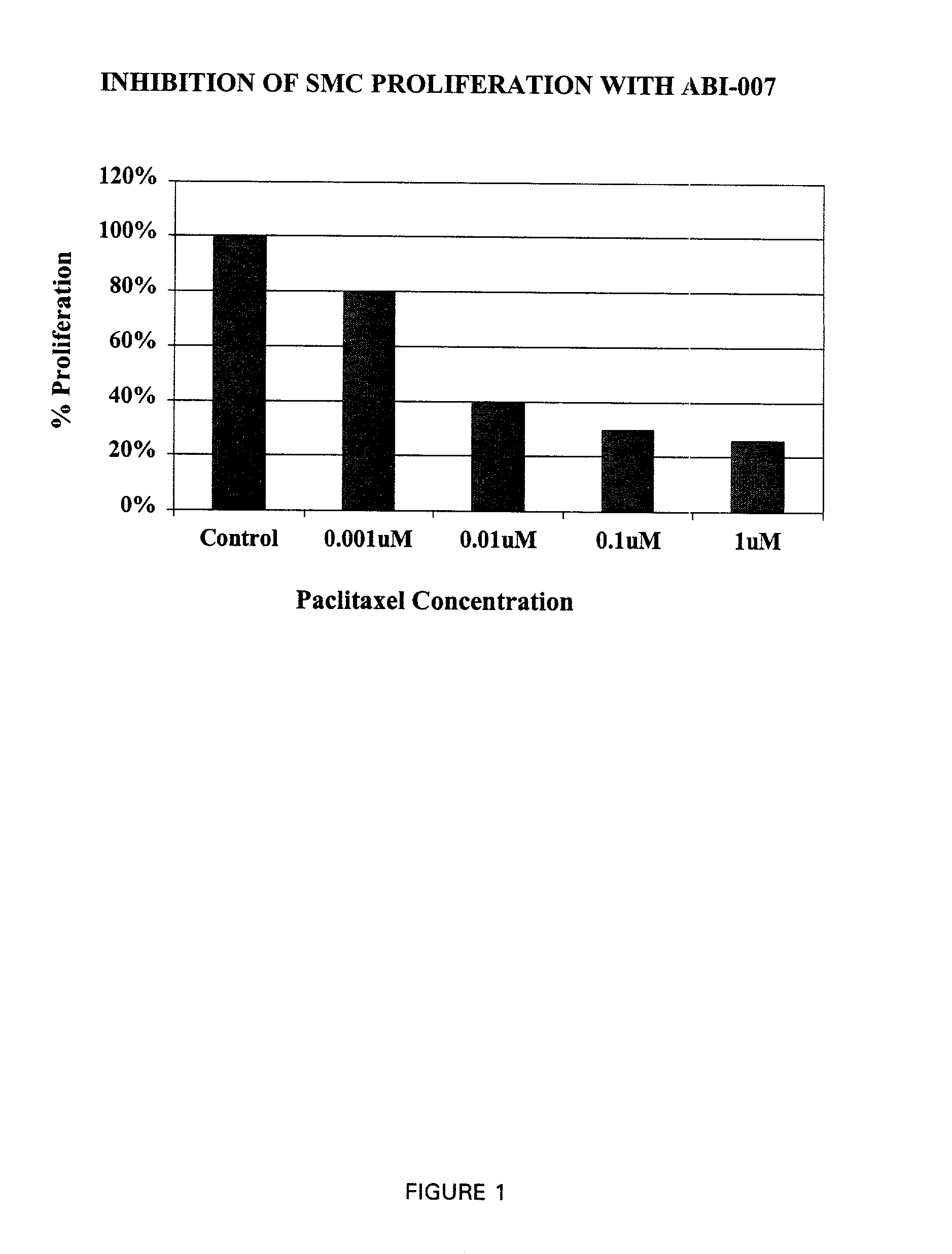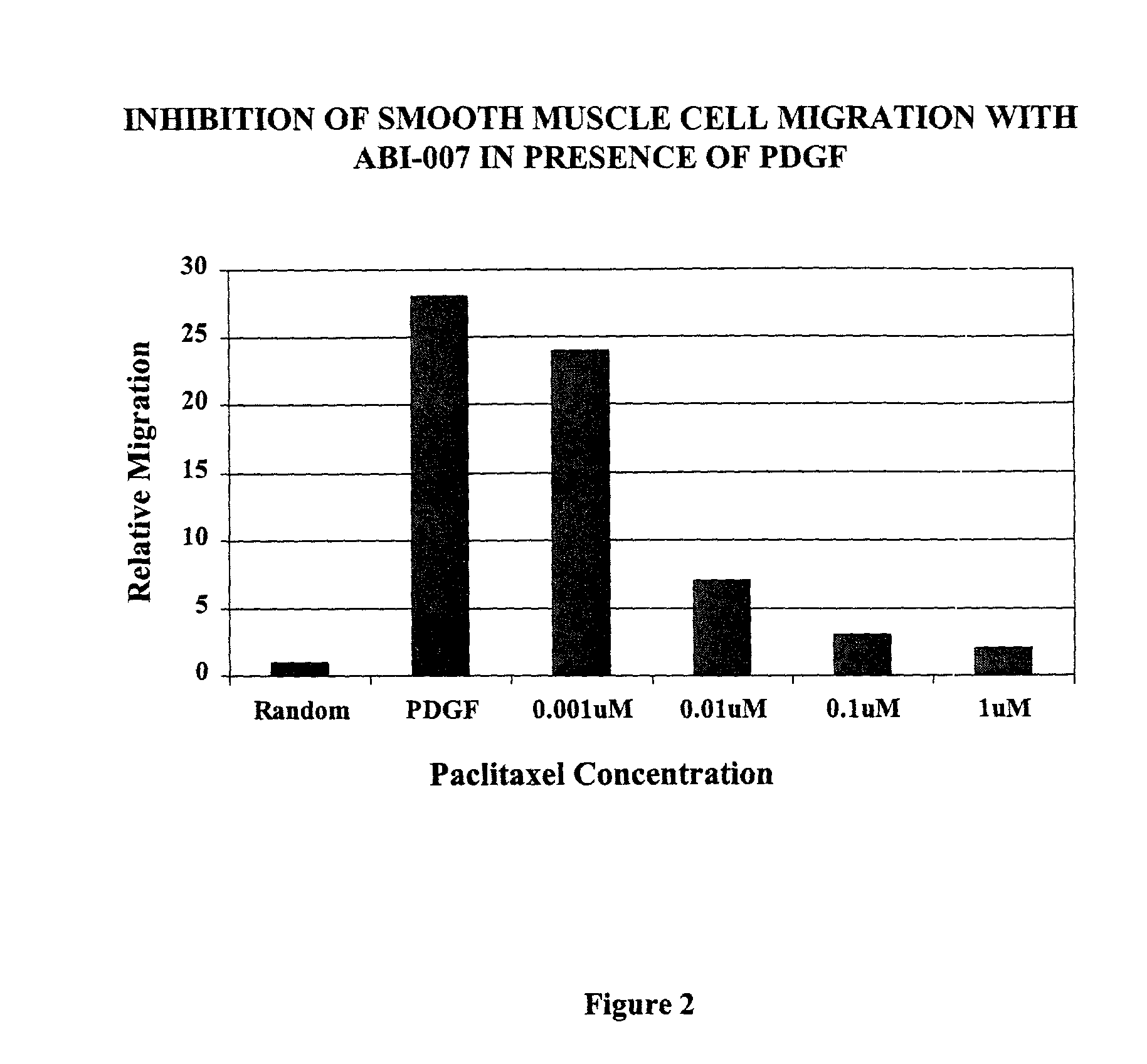Compositions and methods for treatment of hyperplasia
- Summary
- Abstract
- Description
- Claims
- Application Information
AI Technical Summary
Benefits of technology
Problems solved by technology
Method used
Image
Examples
example 2
Systemic Delivery of Nanoparticle Paclitaxel (ABI-007) in a Rabbit Model of In-Stent Restenosis
[0076] This study was designed to examine a novel formulation of systemic paclitaxel (ABI-007, American BioScience, Calif.) on in-stent restenosis in rabbit iliac arteries. Paciltaxel exerts its effect by preventing the depolymerization of microtubules. Although the anti-proliferative effects of this drug are well documented, it has been known to delay healing in arterial injury models, especially with local delivery. It is thought that a systemic formulation of paclitaxel would allow steady control of drug levels and repeat dosing, potentially minimizing its effects on healing. To date, information on systemic delivery of paclitaxel in rabbits is limited, published toxicity studies have mostly been restricted to the rat. The study was conducted in three phases: 1) in-vitro assays of smooth muscle cell proliferation and migration (see Examples 3-5); 2) pharmacokinetics (see Example 6); and...
example 3
In-vitro Tissue Cultures to Establish Dose (Inhibition of SMC Proliferation & Migration)
[0077] Smooth muscle cells (SMCs) isolated from the medial layer of the aorta from 3 male adult donor rabbits were cultured in M 199 supplemented with 10% Fetal Bovine Serum (FBS) and 100 u / ml of penicillin and streptomycin. The cells were grown to confluence in 5% CO.sub.2 / 95% air at 37.degree. and used for proliferation and migration assays.
example 4
[0078] SMC's (2.times.10.sup.4 cells per well) were seeded in 24-well culture plates and incubated with M-199 treated with 10% FBS in a humidified atmosphere of 5% CO.sub.2 / 95% air. The next day, medium was changed and SMC's were further incubated for 48 hrs in M 199 and 1% FBS to synchronize the cells. SMC's were then stimulated in M199 treated with 10% FBS with and without various concentrations of paclitaxel. After 3 days of treatment, SMCs were trypsinized, and the number of cells counted using a hemocytometer. Analyses were done to include a battery of 2 different replicates using 2 different donors. The amount of SMC proliferation was expressed as a percentage of the control wells.
PUM
| Property | Measurement | Unit |
|---|---|---|
| Time | aaaaa | aaaaa |
| Time | aaaaa | aaaaa |
| Dimensionless property | aaaaa | aaaaa |
Abstract
Description
Claims
Application Information
 Login to View More
Login to View More - R&D
- Intellectual Property
- Life Sciences
- Materials
- Tech Scout
- Unparalleled Data Quality
- Higher Quality Content
- 60% Fewer Hallucinations
Browse by: Latest US Patents, China's latest patents, Technical Efficacy Thesaurus, Application Domain, Technology Topic, Popular Technical Reports.
© 2025 PatSnap. All rights reserved.Legal|Privacy policy|Modern Slavery Act Transparency Statement|Sitemap|About US| Contact US: help@patsnap.com


